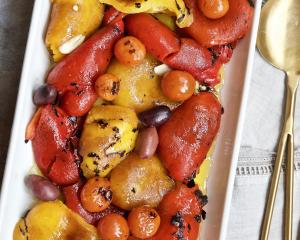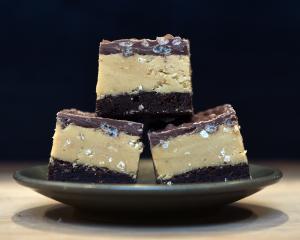Creamy camembert, fresh feta or a beautiful blue - all these cheeses and more can easily be made at home using ordinary kitchen equipment. Janice Murphy finds out how.
My new love's name is Claude. Right now he is the first thing I think of each morning. I sneak loving looks at him whenever I pass as he sits in the kitchen.
Though he comes from South Otago, he has a delicious French accent and I can hardly wait until the day in a few weeks when we will be as one.
That's when I will eat him, because Claude is a camembert-style cheese.
I made him myself during a cheese-making course run by South Otago cheesemaker Dave Milner at Tokomairiro High School.
• Living life in pursuit of his art
• Keeping the craft alive
Ten of us gathered on a sunny Saturday morning for the start of the two-day course.
We started by making feta and fresh cheese.
First we strained fresh raw milk into large pots that held 10 litres each.
These were slowly heated to 65degC and kept at that temperature for 30 minutes to pasteurise the milk, which was then cooled to 34degC.
Tiny amounts of starter were next to go in, followed by even smaller amounts of rennet, mixed with water so it would disperse evenly through the milk.
The pots were stirred for 30sec, then left quiescent.
After 90 minutes, all the milk had set and our feta was ready for the next step.
The curd that had formed was cut and ladled into a mould, which was weighted to stop it from riding up and letting the feta escape.
The curd was then left to sit and let the whey run off.
Next came the fresh cheese.
This was set to drain in a stockinette bag which hung from a broom handle, just like making apple jelly.
Then came the farmhouse and camembert cheeses.
Milk was strained, pasteurised and cooled in the same way as before, but a different starter was introduced, along with a white mould. (This is what Claude is growing in my kitchen as I write.) Then rennet was added and again the pots were left to sit.
This time we treated our curds differently.
For the farmhouse cheese, the curds were cut, reheated and stirred before we ladled them into the mould.
The curds from 10 litres of milk went into that single mould, and then weight was applied to it using an ingenious press of Dave's own design.
The curds for the camembert went into small moulds and we collected the whey as it drained.
This we used to make ricotta.
The ricotta was easiest of all.
The whey was heated to 98degC, then cider vinegar was added.
Clumps of white curds floated to the top to be scooped up.
Hey presto - sweet-tasting creamy ricotta.
On day two, we cut the feta into cubes and put them into brine, where they would stay for the next three days.
We also brined the camembert and the farmhouse cheeses, which would then be left for the white mould to form a skin on them.
The fresh cheese was divided into 10 lots and then we went crazy, adding to our own share whatever we thought would taste nice.
By itself, the cheese was sweet and creamy.
A little salt made it more savoury.
Some added chopped apricots and nuts.
Others, like me, went for garlic, chili or cracked pepper.
It seemed that whatever we did, the end result tasted delicious.
Next came the cheese-wrapping class.
We each had our fresh little camembert to take away, and instructions on how to care for it.
But in a few days it would need to be wrapped and Dave taught us the traditional French method, fold, pull,fold, pull . . .
I kept folding instead of pulling, making the wrapping go awry, and I'm sure Claude won't end up thebest-dressed cheese.
But whatever his wrapping looks like, I'm sure he will have a heart of pure South Otago gold.
And I'm just the woman he needs to appreciate him.













